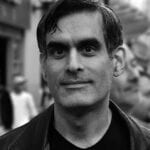Toronto police may soon be able to post surveillance cameras all over the city, and some critics say they could be used against queer people.
The police were given money at the beginning of the year by the provincial government to examine the possibility of setting up fixed surveillance cameras around the city. Most recently, during Caribana week this month, the police set up surveillance cameras along Yonge St — although they promised to erase any footage that didn’t capture a crime.
They’ve also hinted they might use them at Pride celebrations in the future.
Some gay activists say the idea of being watched not only dredges up past abuse by police and government, but also makes some members of the community vulnerable now.
Gary Kinsman, a sociology professor at Laurentian University in Sudbury, has written extensively about the history of state harassment of Canadian gay men and lesbians in the name of national security in the 1950s and ’60s, and of law enforcement. In an e-mail interview, he says the idea of surveillance cameras should worry queers, especially those who engage in public sex.
“Video surveillance is used to police private or intimate acts that may take place in these state-defined public places. As the gay movement has argued, our right to privacy should extend to cover those acts in which we have attempted to construct situations of privacy or intimacy for ourselves.
“In the ’80s and into the ’90s, and continuing in some places, the police used video surveillance to charge men for having consensual sex in washrooms. In some of these situations these men were not out. In at least a couple of cases, when their name was published in the newspapers, they took their own lives.”
Kinsman also says the targetting of bathhouses by police could leave queers vulnerable to surveillance.
“The police can still use Criminal Code sections like ‘indecent act’ and ‘bawdy-house’ charges against us for the consensual sex we engage in. Queer sex is still constructed as more indecent or obscene than similar hetero sex. In these situations video surveillance can still very much be used against us. Since some people are not out, such evidence can also still be used to out people against their will.”
Toronto Police Service spokesperson Mark Pugash says no decision has been made on the plan. He says a committee will eventually present a report on the matter to the Police Services Board, which oversees the force.
“The committee is in the process of looking at public safety, privacy, talking to privacy authorities and groups with privacy concerns. They’ve looked at systems in North America, in Europe, in the UK. In the UK, cameras have been used rather more extensively.”
Pugash says it’s too soon to tell if the use of cameras contributed to the lack of incidents during Caribana compared to previous years. But he says that the cameras already in service around the city — by private businesses, in the subway and in city-owned spaces like Yonge-Dundas Square — have already been useful.
“In a number of homicides, sexual assaults and, in one case, an abducted child, cameras have been instrumental in solving cases.”
Howard Shulman, coordinator of the 519 Community Centre’s antiviolence program, says the cameras may be of some use in dealing with gaybashing,
“In some ways, it would be good, because it would be evidence of what people do. Bashers never act alone. They always seem to be in groups. It’s very hard to make a positive ID.”
But Shulman says he doesn’t know how much of a deterrent cameras would be to bashers, and worries about the idea of government control.
“In the negative sense, it’s like Big Brother watching you.”
But Pugash says the police have been very open about the cameras. He points out that signs on Yonge warned of the cameras, and that police held several press conferences beforehand.

 Why you can trust Xtra
Why you can trust Xtra


